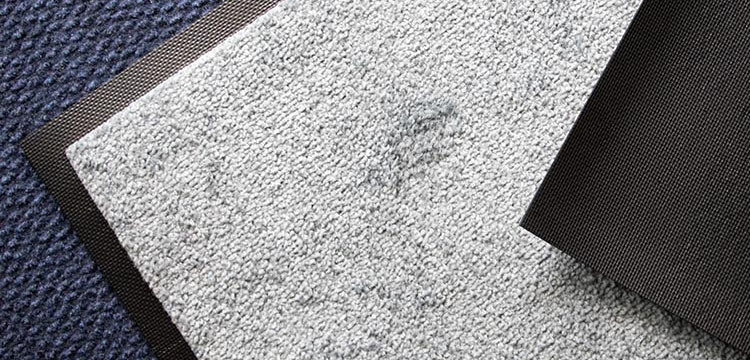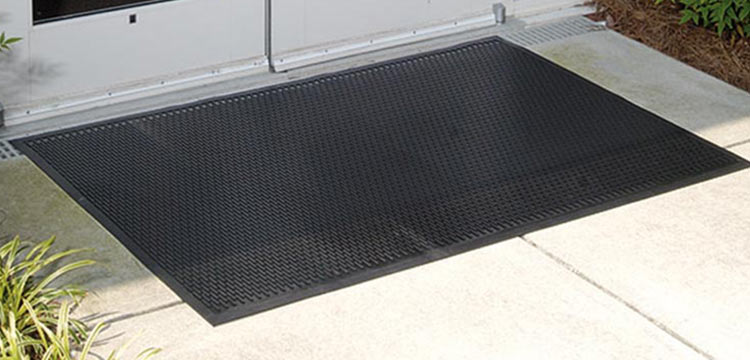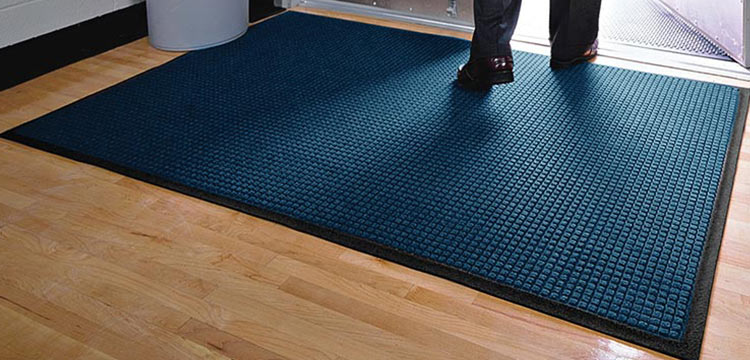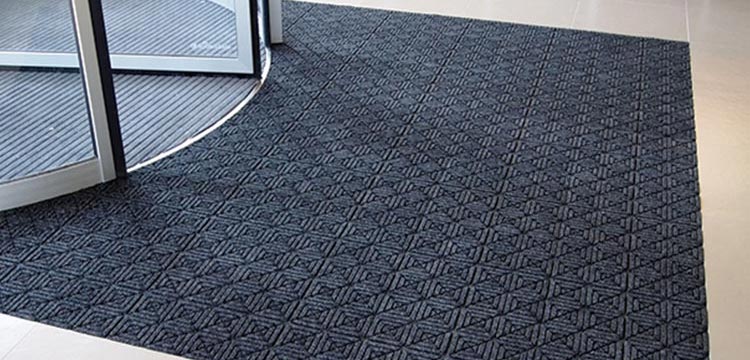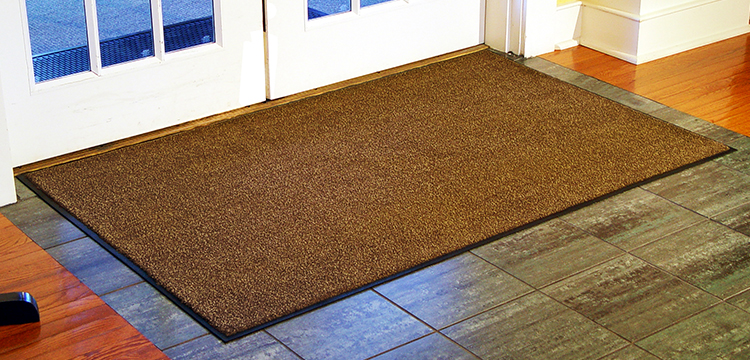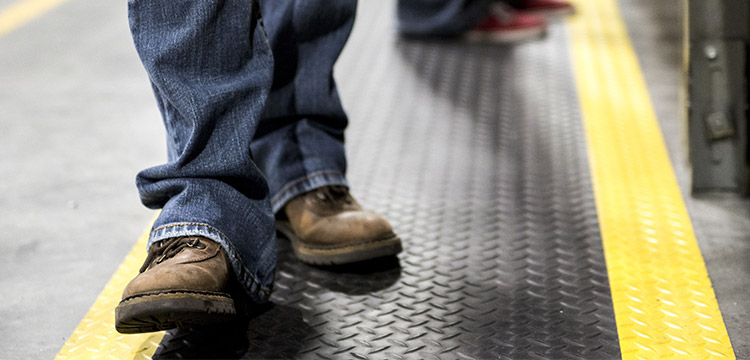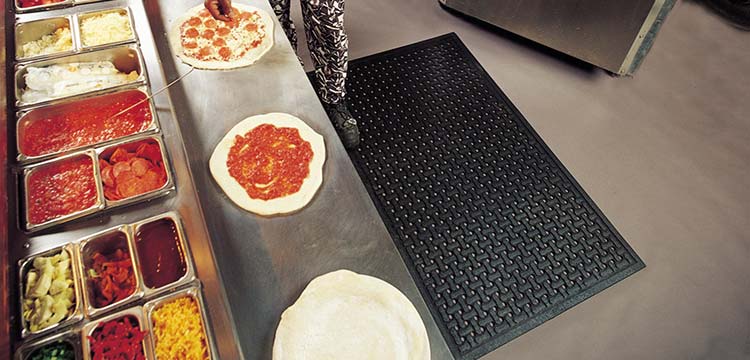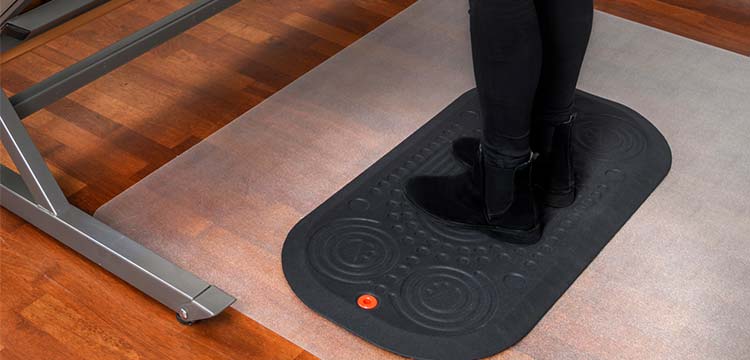Mats4U FAQ's
How do I clean my floor mat?
To ensure optimum performance at all times, your floor mat should be cleaned regularly, however, the method to clean your mat will depend on the type of mat you have. The first step to cleaning most mats is to sweep or vacuum up excess dirt and then hose or pressure wash the mat to remove any stains or grime. Some mats can be cleaned with a carpet extraction cleaner and some mats can also be machine washed such as our Tri-Grip range. It’s best to check before you pop your mat into the washing machine, as machine washing can damage certain mats. Read our How to Clean Your Entrance Mat blog post for more information.
What is an anti-microbial mat?
Specifically designed for sanitary environments, anti-microbial mats can prevent germs and bacteria from spreading in and around your facility, thus preventing contamination. Anti-microbial mats will prevent the transfer of dirt, debris and bacteria from room to room and contain an antibacterial additive, which is designed to kill germs and bacteria that are in contact with the mat. The additive remains effective for the lifetime of the mat and cannot be washed away or washed out of the mat when it is being cleaned. Helping to prevent cross-contamination, minimise odours and stop the spread of germs throughout a public place or business, antibacterial door mats are an ideal solution for premises that must remain as hygienically clean as possible. See our anti-microbial mats section for more information.
What is an anti-fatigue floor mat?
Standing and working for continual periods of time can be detrimental to a person’s health. Poor circulation, stiffness and general muscle fatigue are common side effects of a physically demanding job and so the benefits of anti-fatigue mats involve reducing aches and pains brought on at work, by taking pressure off the muscles. Fatigue can also lead to reduced concentration levels which can result in errors being made or an increase in the likelihood of accidents.
If you’re wondering where to buy anti-fatigue mats, then you have come to the right place. All Mats4U anti-fatigue mats have been tested and after measuring a person’s overall fatigue levels, have shown to reduce fatigue and energy consumption by as much as 50%, showing that anti-fatigue mats do work and are a valuable addition to the workplace.
What is the best anti-fatigue floor mat?
In terms of the best type of anti-fatigue mat to purchase, the Happy Feet collection uses a nitrile rubber encapsulated cushion which greatly alleviates stress to the back and legs. They also feature unique safety qualities and unlike most anti-fatigue mats that will soak up anything from water, grease and dirt, meaning they can only be kept in dry areas, the Waterhog Happy Feet mats can also be safely used in places with water, grease, oil and other risk factors. However, there are plenty of alternative floor mats that may be better suited depending on the need for a mat and where the mat will be placed. For more information please feel free to take a look at our Buyers Guide for Mats and Matting.
Are anti-fatigue mats required by law?
There is no legal obligation in England and Wales for managers to provide them for work, despite the benefits of anti-fatigue mats.
How do good anti fatigue mats help?
Anti fatigue mats are ideal for placing in areas where a person or persons have to stand or work for continual periods. Standing on a hard floor can lead to a number of problems with the human body which can severely contribute to muscle fatigue, stiffness and poor circulation. The areas affected in the human body are shown in the diagram below.
The anti fatigue mats found on the Mats4U website, have been tested to measure a person’s overall fatigue and energy levels. They have been shown to:
1. REDUCE ENERGY CONSUMPTION BY UP TO 50% in the supporting muscles such as those in the leg and the lower back, when compared to standing on a hard floor.
2. REDUCE FATIGUE by promoting subtle movement in the leg and calf muscles, resulting in increased blood and oxygen flow.
3. In a real working environment employees recorded that they felt their FATIGUE WAS REDUCED BY AS MUCH AS 50% when working on anti fatigue mats, in comparison to working on a hard floor.
By doing so anti fatigue mats are able to increase worker productivity.
What is a Coir mat?
Coir is a natural fibre that has been extracted from the outside of a coconut. Its tough, wiry fibres are great for use in doormats. The use of coconut fibres makes coir mats environmentally friendly and their coarse feel means they can effectively scrape away dirt from the bottom of shoes, for a clean and tidy entrance area. The Mats4U Coir mat range features mats with PVC backing which prevents water, grease and other substances being absorbed up into the fibres or falling through the mat onto the floor beneath, meaning your coir mat is a lot more durable than other coir mats without PVC backing.
Are Waterhog mats safe for hardwood floors?
Yes, you can use Waterhog mats on wooden floors. Waterhog mats are strong, totally durable and an effective way of moving dirt and debris from shoes. Their long-lasting tendencies mean they are great for use in areas with heavy traffic and can also act as an anti-slip mat to prevent slips, trips and falls. Waterhog mats come with gripper backing which prevents them from slipping and are therefore not a trip hazard to any passers-by.
Which are the best Entrance Mats?
Our simple demonstration on the video below will show you which are the most effective entrance mats at stopping dirt and water from entering a premises. The video shows the difference in performance between two types of entrance mats: a traditional entrance mat and a Waterhog bi-level entrance mat.
Do you have anti-static mats and static dissipative mats?
Listed below are some of the many mat products we stock that are static dissipative or anti-static.
What is static dissipative, and how does it relate to anti-static?
Static dissipative means the mat can eliminate static charges when they come in contact with the mat. Anti-static means the mat will not cause static charges to be generated. Static dissipative mats are anti-static also since they eliminate the charges as they are generated. Static dissipative mats are safe to use around sensitive electronic equipment, since they will allow static charges to be conducted away from the person's body rather than allowing the charge to be discharged to the equipment.
Keep in mind that static dissipative mats are not designed to protect workers from high-voltage electric charges. Mats for that application are made by a different process and are very conductive, not just of small electric charges.
What size mat do I need?
CLICK HERE TO SEE OUR SIZE CONVERSION TABLE
Often, facilities select mats for their entrances without much thought to the size they really need to effectively stop soil and moisture from entering the building. Due to the fact that 3'x5' and 4'x6' size mats are most often seen in use, facilities will select one of these smaller mat sizes based on this observation. We also see facilities choose a size similar to the one already in use, which may be too small as well. So how can we help facilities make the best choice of mat size for their entrances? The first thing we must do is a facility survey to determine what the needs are for each entryway. Then we must consider other factors.
- Is the entrance a high/low traffic entrance?
- Does the entrance have an outside cover?
- Do carts and buggies come in this entrance?
- Is this a rainy/dry area?
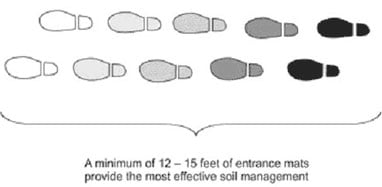
These are a few of the considerations that need to be addressed when deciding how much matting coverage is needed.
The Carpet and Rug Institute recommends a minimum of 12 to 15 feet of coverage to remove 90% of tracked in soil. While a regional grocery store chain's insurance provider recommended a minimum of 23 to 25 feet to remove the majority of moisture entering their facilities. In both cases, the recommendation was much longer than 5 or 6 feet.
Facilities can achieve maximum coverage by utilising a three mat system that includes an outside scraper mat, vestibule wipe/scrape mat, and an interior wiping/finishing mat to collect the moisture and soil not stopped by the first two mats. The sizes of these mats could vary depending on the available area but should measure collectively a minimum of 15 feet.
One way to determine if the current coverage is sufficient is to look beyond the end of the mat. If there is excess soil, moisture, or wear, it is a good bet that there isn't enough coverage for the conditions. Remember it is always better to have too much coverage than not enough.
How do I stop mats from moving on the floor?
There are a number of options for this - see our full list of suggestions here.
What is your delivery policy?
See our delivery information page.

